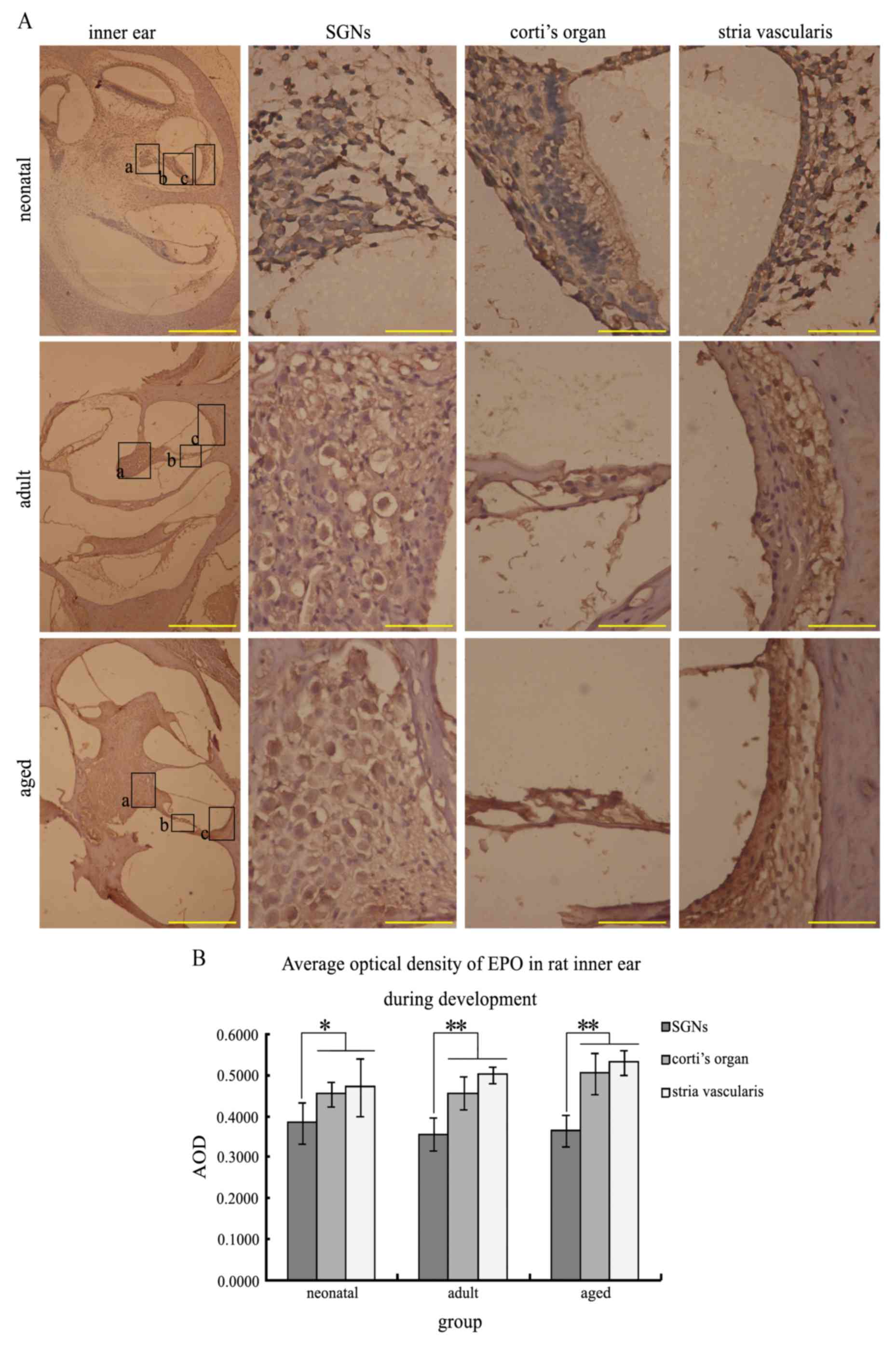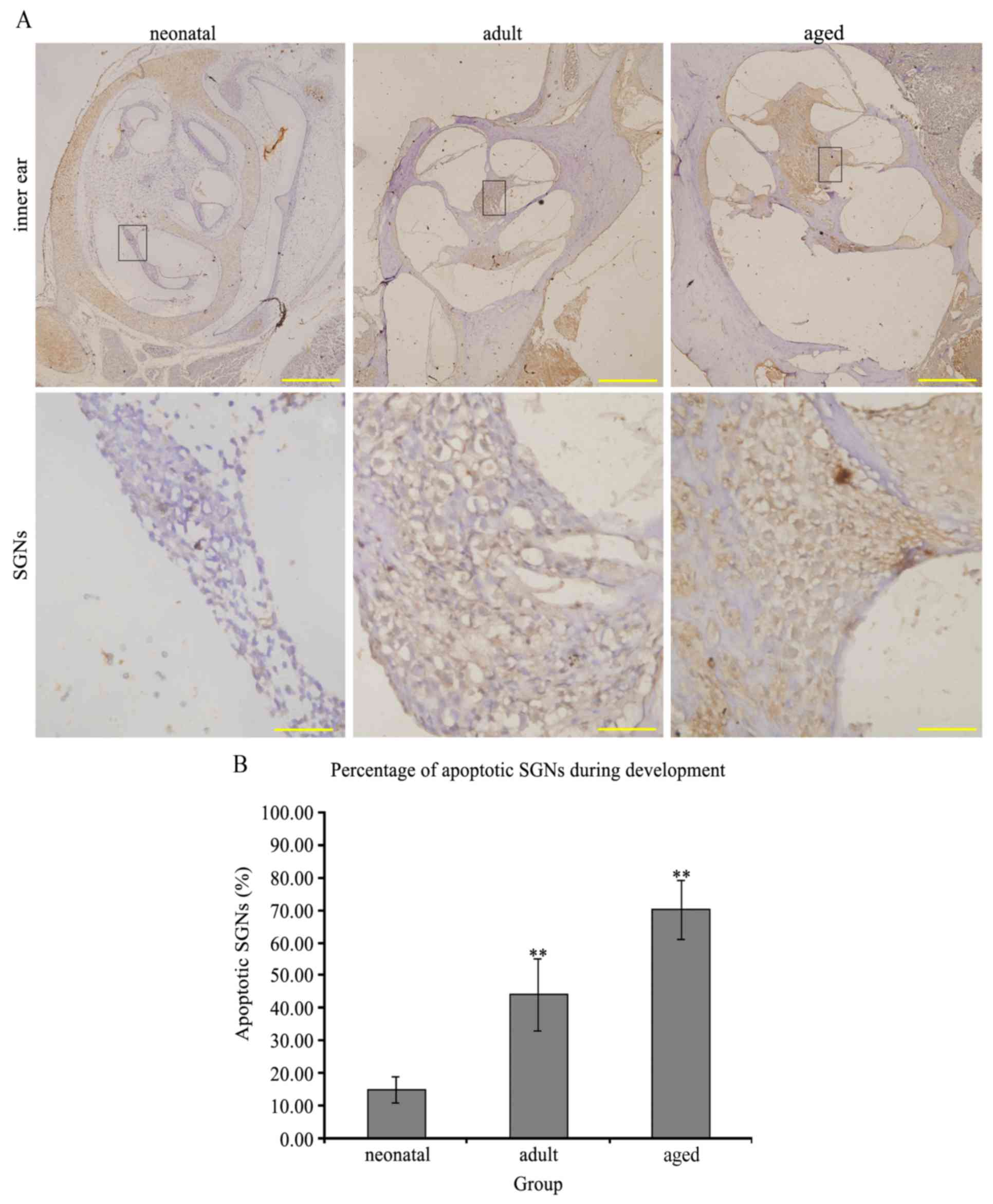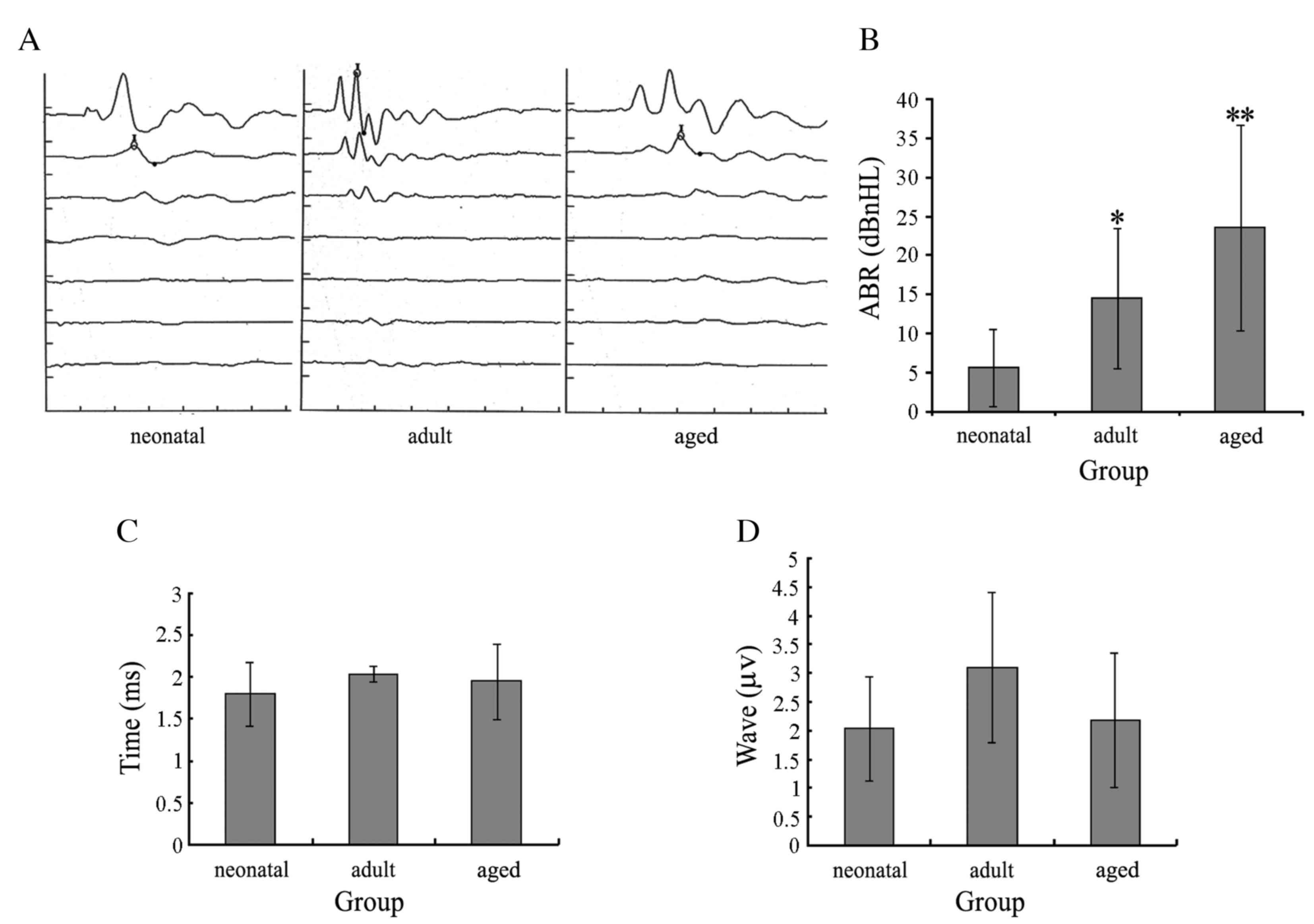Age-associated expression of erythropoietin and its receptor in rat spiral ganglion neurons and its association with neuronal apoptosis and hearing alterations
- Authors:
- Published online on: December 9, 2016 https://doi.org/10.3892/mmr.2016.6010
- Pages: 228-234
-
Copyright: © Zhong et al. This is an open access article distributed under the terms of Creative Commons Attribution License.
Metrics: Total
Views: 0 (Spandidos Publications: | PMC Statistics: )
Total PDF Downloads: 0 (Spandidos Publications: | PMC Statistics: )
Abstract
The present study aimed to determine the expression of erythropoietin (EPO) and the EPO receptor (EPOR) in spiral ganglion neurons (SGNs) in the inner ear of rats of various ages, and the associated neuronal apoptosis and hearing alterations. A total of 15 healthy rats (n=30 ears), were divided into three groups: i) A nominated infant group at post‑natal day (PND) 12‑14, ii) an adult group at PND 60 and iii) a 3‑year postnatal aged group. Auditory brainstem response (ABR) measurements were performed on all rats. EPO and EPOR expression in the inner ear was detected by immunohistochemistry. In situ terminal deoxynucleotidyl transferase dUTP nick end labeling assays were performed to detect the apoptosis of SGNs. The average hearing thresholds of the ABR (decibels above normal hearing level) were 5.625±4.955 in the infant, 15.000±8.498 in the adult and 23.500±13.134 in the aged groups. Hearing thresholds for aged and adult rats increased significantly compared with infant rats. However, the difference in latencies of peak I was not significant (P>0.05). EPO in SGNs was detected during different developmental periods without significant alterations, but were reduced compared with Corti's organ or the stria vascularis. EPOR expression increased significantly from infant to adult stage, and this increased expression was maintained in the aged group. An age‑associated increase in the apoptosis of SGNs was detected in all three groups (P=0.0347). The potential neuroprotective effects of EPO in SGNs may not be revealed during the aging process under natural conditions, and may be associated with spontaneous neuronal apoptosis and consequently, hearing diminution. However, the age‑associated increase in EPOR in SGNs may exert a role in neuroprotection when necessary, for example in presbycusis.













